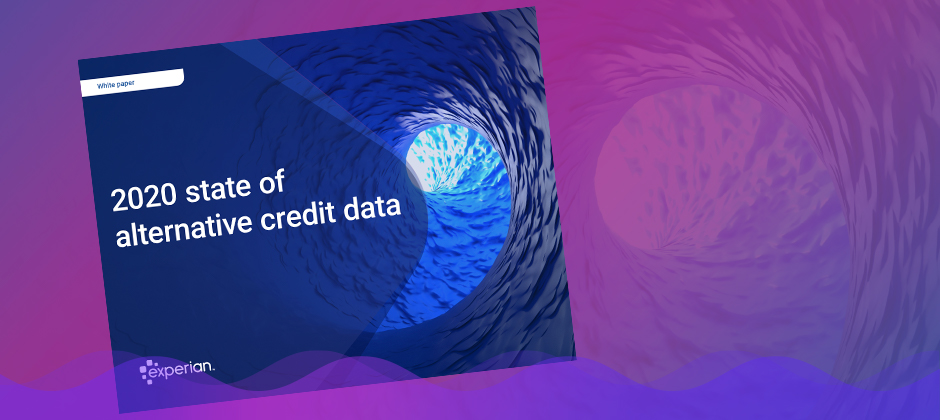Latest Posts

Profitability analysis is one of the most powerful analytics tools in business and strategy development. Yet it’s underrated, deemed too complicated and often ignored. A chief lending officer may state that the goal of strategy development is to increase approvals or to reduce losses. Each one of these goals has an impact generally inversely on each other. That impact may be consequential, and evaluating the effects requires deeper thought and discipline. I propose that the benefits of a profitability analysis in strategy development are worth the additional effort, time and cost. Profitability analysis provides a disciplined framework for making business decisions. For financial companies, a simple profit and loss (P&L) statement will identify interest income, subtract losses and arrive at a risk-adjusted yield. A more robust P&L statement will include interest expense, loss reserves, recovery, fees and other income, operating expenses, other cost per account, and net income. Whether simplified or fully loaded, a P&L analysis used in strategy development must provide a clear and informative representation of key performance metrics and risks. The most important benefit of a profitability analysis is its inherent ability to quantify the trade-offs between risk and rewards. In the P&L terminology, we mean the trade-off between expenses and revenue or losses and interest income. Understanding trade-offs allows companies to make informed decisions and explore serious alternatives. The net income is a concise and elegant metric that captures the impact of various and sometimes competing business objectives. Consider different divisions within a financial organization. Each division has its own specific and measurable objective. Marketing’s goal is to increase loan approvals while Risk is tasked with managing losses. Operations looks to improve efficiencies while IT aims to provide stable, reliable and accurate systems infrastructure. Legal and Compliance ensure regulatory compliance across the entire organization. Each division working to achieve its objectives creates externalities — each division’s actions may not fully incorporate costs imposed on other divisions. For example, targeting highly responsive consumers for a loan product achieves higher loan approvals and may in turn lead to higher credit risk losses. A P&L analysis imposes the discipline for each division to internalize costs and lead to a favorable and efficient outcome for the organization. The challenge with profitability analysis in strategy development is how to develop a good P&L statement. We look to historical data to define assumptions and calibrate inputs to the P&L. There will be uncertainty and concerns regarding the reliability and quality of such data. Organizations don’t regularly conduct test and control experiments or champion and challenger strategies that provide actual performance information on specific areas of studies. Though imperfect, historical data provides a starting foundation for profitability analysis. We augment historical data with predictive credit attributes, industry experience and understanding consumer behavior and incentives. For example, to estimate interest income we may utilize estimated interest rates combined with balance propensity behavior, such as a balance revolver or transactor. To estimate losses on declined population that may be considered for approval, we infer on-us performance using off-us performance with other lenders. Defining assumptions is tedious, hard work and full of uncertainty. This exercise once again imposes the discipline required of organizations to know in detail the characteristics of their products and businesses that make them relevant to consumers. We generate P&L simulations using a set of assumptions, acknowledge the data limitations and evaluate recommendations. A profitability analysis is useful in both times of economic expansion and contraction. A P&L analysis is valuable when evaluating strategies across the customer life cycle. Remember, we live in a world of trade-offs and choices are inevitable. In the prospecting and acquisition life cycle, a P&L analysis provides insights on approval expansion and the consequences of higher credit losses. Alternatively, tighter lending criteria will have a direct impact on balance growth and interest income with lower losses. In account management, a P&L analysis provides estimates on expanded account authorization limits and the effect on activation and usage. In collections, a P&L analysis provides valuation on recoveries and operational costs. These various assessments are quantified in the P&L and allows the organization to identify other mechanisms such as marketing campaigns, customer services or technology investments in support of the organization’s goals and mission. Organizations face a full spectrum of opportunities and risks. We propose a profitability analysis to evaluate business trade-offs, navigate the marketplace, and continue to provide relevant financial products and services to consumers and businesses. Learn more

Consumers are taking advantage of new car incentives, low interest rates and longer-term loans in order to ensure that their vehicle purchase is manageable.

Big data is bringing changes to the way credit scores are reported and making it easier for lenders to find creditworthy consumers, and for consumers to qualify for the financing they need. Since last year’s annual report, alternative credit data1 has continued to gain in popularity. In Experian’s latest 2020 State of Alternative Credit Data report, we take a closer look at why alternative credit data is supplemental and essential to consumer lending and how it’s being adopted by both consumers and financial institutions. While the topic of alternative credit data has become more well known, its capabilities and benefits are still not widely discussed. For instance, did you know that … 89% of lenders agree that alternative credit data allows them to extend credit to more consumers. 96% of lenders agree that in times of economic stress, alternative credit data allows them to more closely evaluate consumer’s creditworthiness and reduce their credit risk exposure. 3 out of 4 consumers believe they are a better borrower than their credit score represents. Not only do consumers believe they’re more financially astute than their credit score depicts – but they’re happy to prove it, with 80% saying they would share various types of financial information with lenders if it meant increased chances for approval or improved interest rates. This year’s report provides a deeper look into lenders’ and consumers’ perceptions of alternative credit data, as well as an overview of the regulatory landscape and how alternative credit data is being used across the lending marketplace. Lenders who incorporate alternative credit data and machine learning techniques into their current processes can harness the data to unlock their portfolio’s growth potential, make smarter lending decisions and mitigate risk. Learn more in the 2020 State of Alternative Credit Data white paper. Download now

Staying ahead of the trends and adjusting will support sales growth, while also supporting consumers as they begin to recover from the impact of COVID-19.

Changing consumer behaviors caused by the COVID-19 pandemic have made it difficult for businesses to make good lending decisions. Maintaining a consistent lending portfolio and differentiating good customers who are facing financial struggles from bad actors with criminal intent is getting more difficult, highlighting the need for effective decisioning tools. As part of our ongoing Q&A perspective series, Jim Bander, Experian’s Market Lead, Analytics and Optimization, discusses the importance of automated decisions in today’s uncertain lending environment. Check out what he had to say: Q: What trends and challenges have emerged in the decisioning space since March? JB: In the age of COVID-19, many businesses are facing several challenges simultaneously. First, customers have moved online, and there is a critical need to provide a seamless digital-first experience. Second, there are operational challenges as employees have moved to work from home; IT departments in particular have to place increase priority on agility, security, and cost-control. Note that all of these priorities are well-served by a cloud-first approach to decisioning. Third, the pandemic has led to changes in customer behavior and credit reporting practices. Q: Are automated decisioning tools still effective, given the changes in consumer behaviors and spending? JB: Many businesses are finding automated decisioning tools more important than ever. For example, there are up-sell and cross-sell opportunities when an at-home bank employee speaks with a customer over the phone that simply were not happening in the branch environment. Automated prequalification and instant credit decisions empower these employees to meet consumer needs. Some financial institutions are ready to attract new customers but they have tight marketing budgets. They can make the most of their budget by combining predictive models with automated prescreen decisioning to provide the right customers with the right offers. And, of course, decisioning is a key part of a debt management strategy. As consumers show signs of distress and become delinquent on some of their accounts, lenders need data-driven decisioning systems to treat those customers fairly and effectively. Q: How does automated decisioning differentiate customers who may have missed a payment due to COVID-19 from those with a history of missed payments? JB: Using a variety of credit attributes in an automated decision is the key to understanding a consumer’s financial situation. We have been helping businesses understand that during a downturn, it is important for a decisioning system to look at a consumer through several different lenses to identify financially stressed consumers with early-warning indicators, respond quickly to change, predict future customer behavior, and deliver the best treatment at the right time based on customer specific situations or behaviors. In addition to traditional credit attributes that reflect a consumer’s credit behavior at a single point in time, trended attributes can highlight changes in a consumer’s behavior. Furthermore, Experian was the first lender to release new attributes specifically created to address new challenges that have arisen since the onset of COVID. These attributes help lenders gain a broader view of each consumer in the current environment to better support them. For example, lenders can use decisioning to proactively identify consumers who may need assistance. Q: What should financial institutions do next? JB: Financial institutions have rarely faced so much uncertainty, but they are generally rising to the occasion. Some had already adopted the CECL accounting standard, and all financial institutions were planning for it. That regulation has encouraged them to set aside loss reserves so they will be in better financial shape during and after the COVID-19 Recession than they were during the Great Recession. The best lenders are making smart investments now—in cloud technology, automated decisioning, and even Ethical and Explainable Artificial Intelligence—that will allow them to survive the COVID Recession and to be even more competitive during an eventual recovery. Financial institutions should also look for tools like Experian’s In the Market Model and Trended 3D Attributes to maximize efficiency and decisioning tactics – helping good customers remain that way while protecting the bottom line. In the Market Models Trended 3D Attributes About our Expert: [avatar user="jim.bander" /] Jim Bander, PhD, Market Lead, Analytics and Optimization, Experian Decision Analytics Jim joined Experian in April 2018 and is responsible for solutions and value propositions applying analytics for financial institutions and other Experian business-to-business clients throughout North America. He has over 20 years of analytics, software, engineering and risk management experience across a variety of industries and disciplines. Jim has applied decision science to many industries, including banking, transportation and the public sector.

As subprime originations decrease, some think that subprime consumers are being locked out of the automotive finance market, but that’s not the whole story.

This is the fourth in a series of blog posts highlighting optimization, artificial intelligence, predictive analytics, and decisioning for lending operations in times of extreme uncertainty. The first post dealt with optimization under uncertainty, the second with predicting consumer payment behavior, and the third with validating consumer credit scores. This post describes some specific Experian solutions that are especially timely for lenders strategizing their response to the COVID Recession. Will the US economy recover from the pandemic recession? Certainly yes. When will the economy recover? There is a lot more uncertainty around that question. Many people are encouraged by positive indicators, such as the initial rebound of the stock market, a return of many of the jobs lost at the beginning of the pandemic, and a significant increase in housing starts. August’s retail spending and homebuilder confidence are very encouraging economic indicators. Other experts doubt that the “V-shaped” recovery can survive flare-ups of the virus in various parts of the US and the world, and are calling for a “W-shaped” recovery. Employment indicators are alarming: many people remain out of work, some job losses are permanent, and there are more initial jobless claims each week now than at the height of the Great Recession. Serious hurdles to economic recovery may remain until a vaccine is widely available: childcare, urban transportation, and global trade, for example. I’m encouraged by the resilience of many of our country’s consumer lenders. They are generally responding well to these challenges. If past recessions are a guide, some lenders will not survive these turbulent times. This time, many lenders—whether or not they have already adopted the CECL accounting standards—have been increasing allowances for their anticipated credit losses. At least one rating agency believes major banks are prepared to absorb those losses from earnings. The lenders who are most prepared for the eventual recovery will be those that make good decisions during these volatile times and take action to put themselves in the best position in anticipation of the recovery that will certainly follow. The best lenders are making smart investments now to be prepared to capitalize on future opportunities. Experian’s analytics and consulting experts are continuously improving our suite of solutions that help consumer lenders and others assess consumer behavior and respond quickly to the rapidly fluctuating market conditions as well as changing regulations and credit reporting practices. Our newly announced Economic Response and Recovery Suite includes the ABCD’s that lenders need to be resilient and competitive now and to prepare to thrive during the eventual recovery: A – Analytics. As I’ve written about in prior blog posts, data is a prerequisite to making good business decisions, but data alone is not enough. To make wise, insightful decisions, lenders need to use the most appropriate analytical techniques, whether that means more meaningful attributes, more predictive and compliant credit scores, more accurate and defensible loss forecasting solutions, or optimization systems that help develop strategies in a world where budgets, regulations, and other constraints are changing. For example, Experian has released a set of Spotlight 2020 Attributes that help consumer lenders create a positive experience for customers who have received an accommodation during the pandemic. In many cases motivated by the new race to improve customer experience online, and in other cases as a reaction to new and creative fraud schemes, some clients are using this period as an opportunity to explore or deploy ethical and explainable Artificial Intelligence. B – Business Intelligence. Credit bureaus like Experian are uniquely situated to understand the impact of the COVID recession on America’s consumers. With impact reports, dashboards, and custom business intelligence solutions, lenders are working during the recession to gain an even better understanding of their current and prospective customers. We’re helping many of them to proactively help consumers when they need it most. For example, lenders have turned to us to understand their customer’s payment hierarchy—which bills they pay first when times are tough. Our free COVID-19 US Business Risk Index helps make lending options available to the businesses who need them most. And we’ve armed lenders with recommendations for which of our pre-existing attributes and scores are most helpful during trying times. Additional reporting tools such as the Auto Market Tracker, Ascend Market Insights Dashboard, and the weekly economic update video provide businesses with information on new market trends—information that helps them respond during the recession and promises to help them grow during the eventual recovery. C – Consulting. It’s good to turn data into information and information into insight, but how do these lenders incorporate these insights in their business strategies? Lenders and other businesses have been turning to Experian’s analytics and Advisory services consultants to unlock the information hidden in credit and other data sources—finding ways to make their business processes more efficient and more effective while developing quick response plans and more long-term recovery strategies. D – Delivery. Decision science is the practice of using advanced analytics, artificial intelligence, and other techniques to determine the best decision based on available data and resources. But putting those decisions into action can be a challenge. (Organizations like IBM and Gartner estimate that a great majority of data science projects are never put into production.) Experian technologies—from our analytics platform to our attribute integration and decision management solutions ensure that data-driven decisions can be quickly implemented to make a real difference. Treating each customer optimally has a number of benefits—whether you are trying to responsibly grow your portfolio, reduce credit losses and allowances, control servicing costs, or simply staying in compliance during dynamic times. In the age of COVID, IT departments have placed increased priority on agility, security, customer experience, and cost control, and appreciate cloud-first approach to deploying analytics. It’s too early to know how long this period of extreme uncertainty will last. But one thing is certain: it will come to an end, and the economy will recover someday. I predict that many of the companies that make the best use of data now will be the ones who do the best during the recovery. To hear more ways your organization can navigate this downturn and the recovery to follow, please watch our on-demand webinar and check out our Economic Response and Recovery Suite. Watch the Webinar

Since the start of the COVID-19 health crisis, gross domestic product (GDP) has continued to fall in the U.S. In fact, the GDP collapsed at a 32.9% annualized rate last quarter, which is the deepest decline since 1947. But as some states throughout the U.S. begin to relax their stay-at-home orders and start to reopen businesses, economists are taking note of how this will affect the nation’s recovery as a whole. When it comes to tracking the nation’s economic recovery, economists and policymakers need to account for all of the factors that will influence the outcome. This includes tracking the performance of individual states and understanding each state’s trajectory and recovery prospects. There are many factors that will impact each state’s trajectory for recovery. One example, in particular, can be seen in a state’s preparedness level and rainy day fund that’s set aside for emergencies. At the onset of the pandemic, many states were unprepared for the financial crisis. The Government Finance Officers Association recommends that states set aside at least two months of operating expenses in their rainy day funds – or roughly 16% of their general fund. However, although some states had set aside some budget to prepare for a recession, it was simply not enough. Only a few states were able to fulfill this requirement. Other factors that will impact each state’s recovery include: the efficiency of its unemployment program, state lockdown measures, and the concentration of jobs in vulnerable industries. Our new white paper, featuring key insights from Joseph Mayans, Principal Economist with Advantage Economics, provides a deep dive on: The economic landscape at the onset of the pandemic Statewide discrepancies for unemployment programs, lockdown measures, and labor markets Underlying factors that determine a state’s recovery prospects Why tracking state-level economies is critical for national recovery Listen in as he describes the importance of having a different perspective when tracking the national economy and download the white paper for greater insights. Download White Paper Now

In 2015, U.S. card issuers raced to start issuing EMV (Europay, Mastercard, and Visa) payment cards to take advantage of the new fraud prevention technology. Counterfeit credit card fraud rose by nearly 40% from 2014 to 2016, (Aite Group, 2017) fueled by bad actors trying to maximize their return on compromised payment card data. Today, we anticipate a similar tsunami of fraud ahead of the Social Security Administration (SSA) rollout of electronic Consent Based Social Security Number Verification (eCBSV). Synthetic identities, defined as fictitious identities existing only on paper, have been a continual challenge for financial institutions. These identities slip past traditional account opening identity checks and can sit silently in portfolios performing exceptionally well, maximizing credit exposure over time. As synthetic identities mature, they may be used to farm new synthetics through authorized user additions, increasing the overall exposure and potential for financial gain. This cycle continues until the bad actor decides to cash out, often aggressively using entire credit lines and overdrawing deposit accounts, before disappearing without a trace. The ongoing challenges faced by financial institutions have been recognized and the SSA has created an electronic Consent Based Social Security Number Verification process to protect vulnerable populations. This process allows financial institutions to verify that the Social Security number (SSN) being used by an applicant or customer matches the name. This emerging capability to verify SSN issuance will drastically improve the ability to detect synthetic identities. In response, it is expected that bad actors who have spent months, if not years, creating and maturing synthetic identities will look to monetize these efforts in the upcoming months, before eCBSV is more widely adopted. Compounding the anticipated synthetic identity fraud spike resulting from eCBSV, financial institutions’ consumer-friendly responses to COVID-19 may prove to be a lucrative incentive for bad actors to cash out on their existing synthetic identities. A combination of expanded allowances for exceeding credit limits, more generous overdraft policies, loosened payment strategies, and relaxed collection efforts provide the opportunity for more financial gain. Deteriorating performance may be disguised by the anticipation of increased credit risk, allowing these accounts to remain undetected on their path to bust out. While responding to consumers’ requests for assistance and implementing new, consumer-friendly policies and practices to aid in impacts from COVID-19, financial institutions should not overlook opportunities to layer in fraud risk detection and mitigation efforts. Practicing synthetic identity detection and risk mitigation begins in account opening. But it doesn’t stop there. A strong synthetic identity protection plan continues throughout the account life cycle. Portfolio management efforts that include synthetic identity risk evaluation at key control points are critical for detecting accounts that are on the verge of going bad. Financial institutions can protect themselves by incorporating a balance of detection efforts with appropriate risk actions and authentication measures. Understanding their portfolio is a critical first step, allowing them to find patterns of identity evolution, usage, and connections to other consumers that can indicate potential risk of fraud. Once risk tiers are established within the portfolio, existing controls can help catch bad accounts and minimize the resulting losses. For example, including scores designed to determine the risk of synthetic identity, and bust out scores, can identify seemingly good customers who are beginning to display risky tendencies or attempting to farm new synthetic identities. While we continue to see financial institutions focus on customer experience, especially in times of uncertainty, it is paramount that these efforts are not undermined by bad actors looking to exploit assistance programs. Layering in contextual risk assessments throughout the lifecycle of financial accounts will allow organizations to continue to provide excellent service to good customers while reducing the increasing risk of synthetic identity fraud loss. Prevent SID

The early assessment for the automotive industry is that despite significant challenges at the onset of the pandemic, the industry continues to rebound.

Achieving collection results within the subprime population was challenging enough before the current COVID-19 pandemic and will likely become more difficult now that the protections of the Coronavirus Aid, Relief, and Economic Security (CARES) Act have expired. To improve results within the subprime space, lenders need to have a well-established pre-delinquent contact optimization approach. While debt collection often elicits mixed feelings in consumers, it’s important to remember that lenders share the same goal of settling owed debts as quickly as possible, or better yet, avoiding collections altogether. The subprime lending population requires a distinct and nuanced approach. Often, this group includes consumers that are either new to credit as well as consumers that have fallen delinquent in the past suggesting more credit education, communication and support would be beneficial. Communication with subprime consumers should take place before their account is in arrears and be viewed as a “friendly reminder” rather than collection communication. This approach has several benefits, including: The communication is perceived as non-threatening, as it’s a simple notice of an upcoming payment. Subprime consumers often appreciate the reminder, as they have likely had difficulty qualifying for financing in the past and want to improve their credit score. It allows for confirmation of a consumer’s contact information (mainly their mobile number), so lenders can collect faster while reducing expenses and mitigating risk. When executed correctly, it would facilitate the resolution of any issues associated with the delivery of product or billing by offering a communication touchpoint. Additionally, touchpoints offer an opportunity to educate consumers on the importance of maintaining their credit. Customer segmentation is critical, as the way lenders approach the subprime population may not be perceived as positively with other borrowers. To enhance targeting efforts, lenders should leverage both internal and external attributes. Internal payment patterns can provide a more comprehensive view of how a customer manages their account. External bureau scores, like the VantageScore® credit score, and attribute sets that provide valuable insights into credit usage patterns, can significantly improve targeting. Additionally, the execution of the strategy in a test vs. control design, with progression to successive champion vs. challenger designs is critical to success and improved performance. Execution of the strategy should also be tested using various communication channels, including digital. From an efficiency standpoint, text and phone calls leveraging pre-recorded messages work well. If a consumer wishes to participate in settling their debt, they should be presented with self-service options. Another alternative is to leverage live operators, who can help with an uptick in collection activity. Testing different tranches of accounts based on segmentation criteria with the type of channel leveraged can significantly improve results, lower costs and increase customer retention. Learn About Trended Attributes Learn About Premier Attributes

New challenges created by the COVID-19 pandemic have made it imperative for utility providers to adapt strategies and processes that preserve positive customer relationships while continuing to collect delinquent balances during an unpredictable and unprecedented time. As part of our ongoing Q&A perspective series, Beth Bayer, Experian’s Vice President of Energy Sales, and Danielle Grigaliunas, Product Manager of Collection Solutions, discuss the changing collections landscape and how the utility industry can best adapt. Check out what they had to say: Q: How are the COVID-19 crisis and today’s economic environment impacting consumer behavior? Particularly as it relates to delinquencies and payments? BB: Typically, when we experience recessions, delinquency goes up. In this recession, delinquency is declining. Stimulus money and increased unemployment benefits, coupled with stay at home orders, appear to be leading to more dollars available for consumers to repay obligations and debts. Another factor is related to special accommodations, forbearances, and payment holidays or extensions, that provide consumers with flexible options in making their regularly scheduled payments. Once an accommodation is granted, the lender or bank puts a code on the account when it’s reported to the bureaus and the account does not continue to age. Q: As a result of the pandemic, many regulatory bodies are recommending or imposing changes to involuntary disconnect policies. How can utility providers effectively collect, even if they can’t disconnect? BB: The public utility commissions in many areas have suspended disconnects due to non-payment, further increasing balances, delinquency and delaying final bill generation. Without the fear of being disconnected for non-payment in some regions of the country, customers are not paying delinquent utility bills. Utility providers should continue to provide payment reminders and delinquency notices and offer payment plans in exchange for partial payments to continue to engage customers. Identifying which customers can pay and are actively paying other creditors and institutions helps prioritize proactive outreach. Q: For utility providers who offer in-house collection services, what strategies and credit data do you find most valuable? DG: Current and accurate data is key when looking to provide stronger and more strategic collections. This data is built into efficient scoring models to articulate which debts are most collectible and how much money will be recovered from each consumer. Without the overlay of credit data, it’s harder for utility providers to predict how consumers prioritize utility debt during times of economic stress. By better understanding the current state of the consumer, utility providers can focus on consumers who are most likely to pay. Investing in monitoring solutions allows utility providers to receive notifications when their consumers are beginning to cure and pay off other obligations and take a more proactive approach. Q: What are the best methods for utility providers to reach collection consumers? What do they need to know as they begin to utilize omnichannel communications? DG: Regular data hygiene checks and skipping are the first line of defense in collections. Confirming contact information is correct and up to date throughout the entire consumer lifecycle helps to establish a strong relationship. Those who are successful in collections invest in omnichannel messaging and self-service payment options, so consumers have a choice on how they’d like to settle their obligations. Q: What current collection trends/challenges are we seeing within the utility space? BB: Utility providers do not traditionally report active customer payments and delinquencies to the credit bureaus. Anecdotally, our utility partners tell us that delinquencies are up and balances are growing. Many customers know that they cannot currently be disconnected if they fall behind on their utility payments and are using this opportunity to prioritize other debts. We also know that some utilities have reduced collection activities during the pandemic due to office closures and have cut back on communication efforts. Additionally, we’re hearing from some of our utility partners that collections and recoveries of final billed or charged-off accounts are increasing, despite many agencies closing and limited to no collection activities occurring. We assume this is because these balances are typically reported to the credit reporting agencies, triggering a payment and interest in clearing that balance first. Constant communication, flexibility, and empathizing with your customers by offering payment plans and accommodations will lead to an increase in dollars collected. DG: There’s been a large misunderstanding that because utility providers can’t disconnect, they can’t attempt to collect. The success of collections has been seen within first parties, as they are still maintaining strong relationships by reaching out at optical times and remaining top-of-mind with consumers. The utility industry needs to take a proactive approach to ensure they are focusing on the right consumers through the right channels at the right time. Credit data that matches the consumer’s credit health (i.e. credit usage and payments) is needed insight when trying to understand a consumer’s overall financial standing. For more insight on how to enhance your collection processes and capabilities, watch our Experian Symposium Series event on-demand. Watch now About our Experts: Beth Bayer, Vice President of Sales, Experian Energy, North America Beth leads the Energy Vertical at Experian, supporting regulated, deregulated and alternative energy companies throughout the United States. She strives to bring innovative solutions to her clients by leveraging technology, data and advanced analytics across the customer lifecycle, from credit risk and identity verification through collections. Danielle Grigaliunas, Product Manager of Collections Solutions, Experian Consumer Information Services, North America Danielle has dedicated her career to the collections space and has spent the last five years with Experian, enhancing and developing collections solutions for various industries and debt stages. Danielle’s focus is ensuring that clients have efficient, compliant and innovative collection and contact strategies.

The COVID-19 pandemic created a global shift in the volume of online activity and experiences over the past several months. Not only are consumers increasing their usage of mobile and digital channels to bank, shop, work and socialize — and anticipating more of the same in the coming months — they’re closely watching how businesses respond to their needs. Between late June and early July of this year, Experian surveyed 3,000 consumers and 900 businesses to explore the shifts in consumer behavior and business strategy pre- and post-COVID-19. More than half of businesses surveyed believe their operational processes have mostly or completely recovered since COVID-19 began. However, many consumers fear that a second wave of COVID-19 will further deplete their already strained finances. They are looking to businesses for reassurance as they shift their behaviors by: Reducing discretionary spending Building up emergency savings Tapping into financial reserves Increasing online spending Moving forward, businesses are focusing on short-term investments in security, managing credit risk with artificial intelligence, and increasing online customer engagement. Download the full report to get all of the insights into global business and consumer needs and priorities and keep visiting the Insights blog in the coming weeks for a deeper dive into US-specific findings. Download the report

In today’s uncertain economic environment, the question of how to reduce portfolio volatility while still meeting consumers’ needs is on every lender’s mind. With more than 100 million consumers already restricted by traditional scoring methods used today, lenders need to look beyond traditional credit information to make more informed decisions. By leveraging alternative credit data, you can continue to support your borrowers and expand your lending universe. In our most recent podcast, Experian’s Shawn Rife, Director of Risk Scoring and Alpa Lally, Vice President of Data Business, discuss how to enhance your portfolio analysis after an economic downturn, respond to the changing lending marketplace and drive greater access to credit for financially distressed consumers. Topics discussed, include: Making strategic, data-driven decisions across the credit lifecycle Better managing and responding to portfolio risk Predicting consumer behavior in times of extreme uncertainty Listen in on the discussion to learn more. Experian · Effective Lending in the Age of COVID-19

As the COVID-19 pandemic continues to create uncertainty for the U.S. economy, different states and industries have seen many changes with each passing month. In our July edition of the State of the Economy report, written by Principal Economist Joseph Mayans, we’ll be breaking down the data that financial institutions can use to navigate a recovery. Labor markets and state-level employment impact Prior to the pandemic, unemployment in the U.S. was at a 50-year low, at an astonishing rate of 3.5%. Following the start of the pandemic, research shows that unemployment rose from 6.2 million in February to 20.5 million in May 2020, and sent the unemployment rate soaring to 14.7%. However, the data from last month’s State of the Economy Report revealed that the unemployment rate began to decline, with 46 states seeing rises in new job opportunities. Although unemployment started to increase, many states (like Nevada) saw a 25.3% unemployment rate statewide. The numbers for June are much more promising, and reveal a continuous uptick in the number of jobs added. The unemployment rate in the U.S. also fell from 13.3% to 11.1%. The impact to industries COVID-19 had major impacts on every industry in the U.S., with the leisure and hospitality industry being the hardest-hit at 7.7 millions job lost. According to CNBC, “The large number of layoffs in this industry led the U.S. economy to its worst month of job losses in modern history.” However, job growth for the leisure and hospitality industry began to gain momentum in May, with 1.2 million jobs added. This can be attributed to a slow and gradual rollback of stay-at-home orders nationwide. As of June 2020, 4.8 million jobs have been added to this industry. The trade, transportation, and utilities, as well as education and health services, manufacturing, and business services industries also saw improvements in employment. The impact to retail sales Clothing stores, furniture, and sporting goods stores were only a few of the many retailers that saw heavy declines following lockdown orders. After two consecutive months of decline, retail sales finally rebounded by 17.7% in May, with the largest gains occurring in clothing stores (+188%). In June, retail sales continued to rise substantially, resulting in saw a v-shaped bounce. However, with unemployment benefits nearing the expiration date and the number of pandemic cases continuing to increase, recovery remains tentative. Our State of the Economy report also covers manufacturing, homebuilders, consumer sentiments, and more. To see the rest of the data, download our report for July 2020. We’ll be sharing a new report every month, so keep an eye out! Download Now